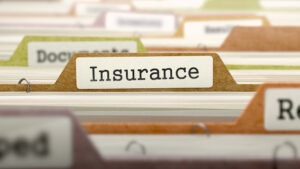During the winter months, an outing to a neighborhood store, mall or restaurant could quickly turn dangerous. If the weather produces snow and ice and it’s left to accumulate, the potential for a person to slip and fall increases greatly. If the hazards are not handled properly, a commercial property can become unsafe for its customers and employees.
So, who is in charge of snow and ice maintenance and what should they be doing to keep people safe? The owners and their property managers are responsible. They are required to keep pedestrian walking surfaces clear of snow and ice. This includes the parking lot, sidewalks, outside mezzanines, ramps, stairs or any other areas that could be used as a pedestrian path.
When it comes to snow and ice, there are a variety of steps that need to be taken by property owners and managers to create a safe environment. First and foremost, being educated about the most up-to-date snow and ice removal procedures is key. Also, creating a snow and ice removal plan and hiring an experienced and reliable snow removal company is essential to keeping people out of harm’s way.
It is not unusual for commercial property owners to hire a company to handle their snow and ice removal needs. However, they can’t hire just anyone to get the job done. It’s important to hire an experienced company with a background in current snow and ice management techniques, training and products. When hiring a snow removal company, documentation of services should also be something they offer. During a snow event, it’s critical to document the process, such as arrival time of crews, conditions of property, services performed, and areas serviced and not serviced.
In addition to the snow and ice removal company having the right credentials, the property’s managerial staff also needs to have sufficient background so they can oversee the work being done. As with all industries, techniques, products, and methodology change over time and it’s ultimately the property owner’s job to make sure the correct ice and snow removal protocols are in place.
Next up for securing a commercial environment is creating a plan or checklist for snow and ice removal. The plan must address thawing and refreezing, snow pile placement, weather service standards, and warnings and barricades.
Prior to the winter season or certainly before any snow removal begins, the property manager and the property’s snow and ice removal company should address snow placement. The proper placement of snow piles greatly affects safety. It would be a good idea to have a map detailing the plowing area and designated snow pile placement areas.
When figuring out where a snow pile should go, it’s important to pay attention to entrances and exits as well as the ground elevation. Snow should never be piled on an incline where it can melt, flow into high-traffic areas and then refreeze. This scenario will create a hazard once the snow melts.
Snow piles should be placed in areas that do not intrude upon normal traffic on properties, do not create unnecessary visual obstruction, and are not in areas that create other potential hazards such as melting and refreezing. In addition, snow piles should not be placed on small islands, in or around handicap spaces, or around light poles.
If a commercial property fails to place snow piles in the correct locations or doesn’t remove the piled snow within a reasonable amount of time, it becomes responsible for having an unsafe environment.
Keeping tabs on the weather is another necessary standard to follow. Property managers and snow removal companies must have access to a weather service with a certified meteorologist on staff. Weather service reporting should include a detailed summary of the weather for each day of the season. Everyone involved with the maintenance of the property must be advised of potentially icy and dangerous conditions that could affect the safety of the property.
If it turns out that snow and ice could create a hazardous situation, a warning or barricade must be provided to identify the area until the problem is eliminated. The goal is to eliminate and/or reduce, as much as possible, the potential for injury. Warning signs should be placed at approaches to, or around, areas where slip and fall hazards are foreseeable.
If a commercial property fails to follow these national guidelines for snow and ice removal, it is compromising the safety of its customers and employees. If you or a loved one has been injured due to snow or ice located on someone else’s property, call us at 703-836-3366, email tcurcio@curciolaw.com, or visit us at curciolaw.com and we will follow up with you right away to discuss your legal options.

Tom Curcio has devoted his career to representing people seriously injured or killed in car, pedestrian, bicycle, and truck crashes, and by dangerous dogs, unsafe products, and premises. He works tirelessly to obtain the compensation his clients are legally entitled to so they may rebuild their lives with dignity. Tom is the co-author of the book Evidence For The Trial Lawyer, and a much sought-after speaker on personal injury, trial practice, evidence, and professionalism. Contact Tom at tcurcio@curciolaw.com.










Comments for this article are closed.